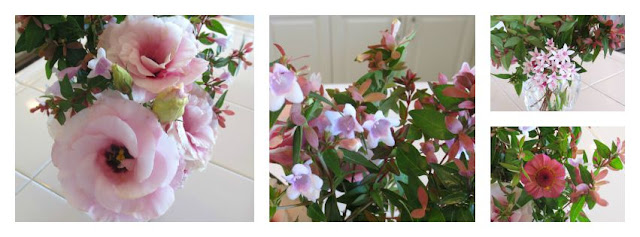The weather is so very mild
That some would call it warm.
Good gracious, aren't we lucky child,
Here comes a thunderstorm!
The sky is now indelible ink,
The branches reft asunder;
But you and I we do not shrink;
We love the lovely thunder.
The garden is a raging sea,
The hurricane is snarling;
Oh happy you and happy me!
Isn't the lightning darling?
-Ogden Nash, The Watched Example Never Boils (partial)
 |
| Yesterday morning's view of the harbor from our backyard |
The poem at the top of the post is the first, and possibly only, poem I ever committed to memory. My fifth grade teacher required each student to recite a poem before the class and that was my selection, from what may have been the only book of poetry in my mother's bookshelf. What's most remarkable is that I still remember the first 3 stanzas by heart. This is possibly because it comes to mind every time there's a thunder storm. (You can find the rest of the poem
here.)
Thunder storms, especially summer thunder storms, aren't common in our area. This one was brought to us courtesy of
Tropical Storm Dolores and I am very grateful. More rain is due later today but yesterday's downpour brought us 0.42 inches (1.07 cm), filling my 50-gallon water tank and partially filling my 160 and 265-gallon tanks. I know that's not much rain by the standards of those of you in other areas but it's enough to make southern Californians deliriously happy (so long as it isn't accompanied by floods and mudslides).
 |
| My 160-gallon tank went from 10 gallons yesterday morning to 75 gallons by late afternoon |
I filled my plastic garden trugs several times in just minutes yesterday too, capturing the water pouring down the rain chain. I used the first buckets to water all the pots and beds sitting under the roof overhangs. I topped off the fountain. Then I filled 4 more trugs but, with nowhere else to put it, I added the contents to the 160-gallon tank this morning, bringing the total in that tank to just over 100 gallons.
It's incredible how much rain sheets off the average roof. The problem is capturing and storing it. So much is lost.
 |
| Water streaming down the street in front of our house |
More rain is expected this afternoon. It's sunny, hot and humid now but I'm hoping to get a couple of hours of work in the garden in before the lightning and thunder returns. I had another 3 cubic yards of mulch delivered a few days ago and more than half of it's still sitting in the driveway under a tarp. Yesterday, I gave that effort up as the thunder started to rumble. I've foolishly ignored storm conditions before and kept working but recent newscasts have been full of reports of people injured or killed by lightning strikes so I'm trying to be more sensible. To be truthful, the biggest deterrent to working outside in this muggy weather has been the mosquitoes. Even a temporary failure to clip on my insect-repellent fan resulted in another dozen bites.
 |
| Apparently the birds are too busy at the feeders to hunt mosquitoes |
However you're spending the weekend, I hope good fortune is with you too!
All material
© 2012-2015 by Kris Peterson for Late to the Garden Party

























































